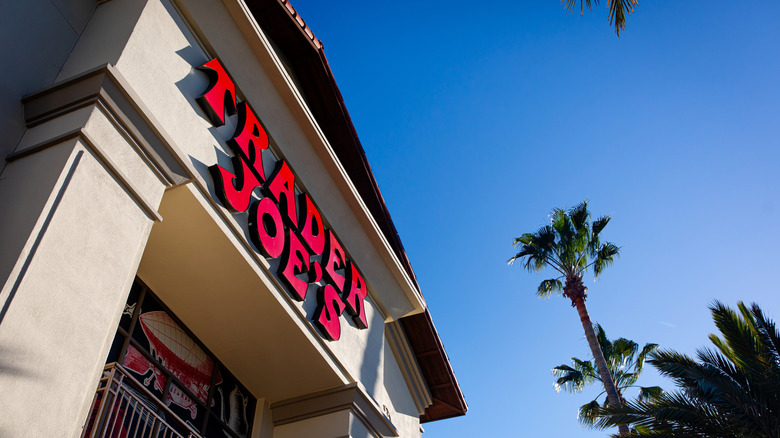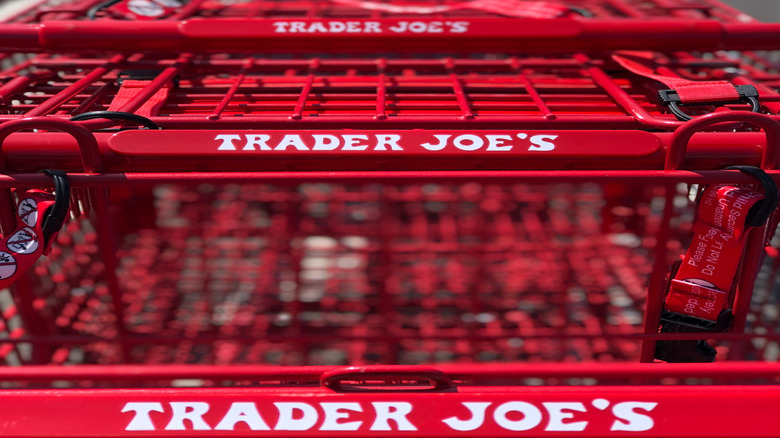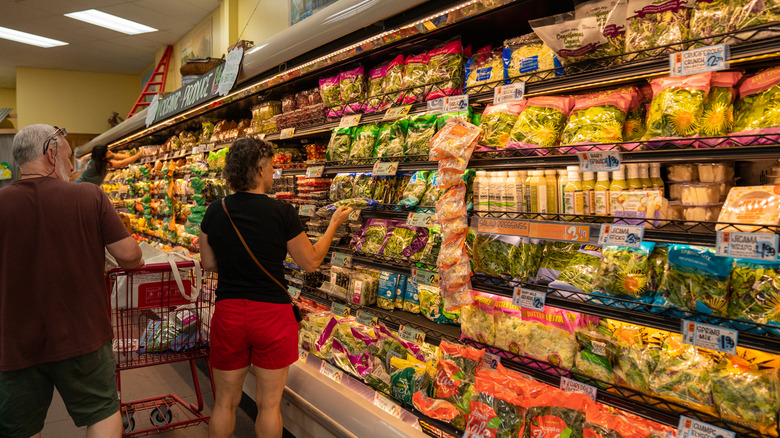You've Been Warned: Buying Produce At Trader Joe's Could Cost You
When it comes to saving money, most consumers are grateful for any help they can get. This is especially true when it comes to grocery shopping. In fact, according to the U.S. Department of Agriculture's Economic Research Service, food prices in the U.S. rose by 23.6% between 2020 and 2024. To put that into perspective, that's 0.6% more than even housing prices rose during that same period. While certain items have received more attention than others — such as skyrocketing egg prices -– other food items could be facing tariff-induced increases soon, so you might want to stock up on canned food like tuna sooner rather than later.
While there are many different ways to save money at the grocery store, you might also want to consider the actual grocery store you're shopping at in the first place. While most consumers will have their favorites, not all grocery store chains are created equal, and this is especially true when it comes to prices. Cost comparing grocery items across multiple locally available chains can be an extremely useful way to ensure you stay within your family's weekly grocery budget. When comparing prices across popular brands like Costco vs. Walmart, or Target vs. Kroger, some important financial trends become obvious. Case in point, despite its budget conscious reputation, fan-favorite Trader Joe's might not actually be the most economical choice for your weekly grocery shopping — especially when it comes to produce.
Comparing prices at Trader Joes
To put it simply, there is not a clear-cut consensus on whether or not Trader Joe's prices are more or less expensive than other alternatives. A 2023 Delish comparison found that Whole Foods, of all places, cost consumers 16% less on a single sweet potato when compared to the same item at Trader Joe's. While a single potato might not affect your ability to pay the mortgage, it can be a good indication of larger pricing trends. However, with that said, a similar 2025 CNET comparison found that overall Trader Joe's pricing, across 50 basic grocery items, was 21.5% cheaper than regional grocery store Stop & Shop (which is a sister store to Hannaford, Giant, and Food Lion, depending on your geographic region).
Similarly, Business Insider found that Trader Joe's was cheaper than Target, but more expensive than Walmart. All of this is to say that, depending on your city, or even state — and therefore your alternative grocery store options — you might face very different grocery prices than others. This factor can and does change just how differently Trader Joe's produce prices might stack up when compared to your local preferred grocery store's options. For example, according to a 2024 analysis from Food Label Maker, Texas boasts the lowest grocery prices in the country – 9.7% below the national average, to be exact. As such, shoppers in Texas are more likely to find lower prices available at regional competitor stores than states with more expensive overall grocery store prices.
Other things to keep in mind when shopping at Trader Joe's
As any Trader Joe's shopper has probably noticed, the company rather famously loves plastic. In fact, a majority of the produce available at a Trader Joe's store is likely to come in pre-packaged bags or containers, which can ultimately be more expensive to produce and distribute — thereby contributing to higher produce prices. Not to mention, this excessive use of plastic leaves a lot to be desired for anyone with an eye towards sustainability. Plus, anyone wanting a single of something — say a jalapeno or bell pepper — is forced to buy the company's pre-packaged multi-packs which might not necessarily work for their needs. Not only does this contribute greatly to the sheer amount of money that Americans lose to food waste every year, but the packaging itself can also ensure a shorter shelf life for the produce that consumers buy at Trader Joe's. Since plastic bags stifle circulation, chances are good your salad mix or butternut squash pack will spoil faster than you might have anticipated — further contributing to food waste.
Another consideration to keep in mind is the particular way that Trader Joe's sells its produce. More specifically, the company's use of per item pricing, rather than the more traditional per pound pricing found at other grocery stores. This can make a multi-pack of something seem like a competitively better price, but can in fact lead to higher per-item prices instead. Plus, as previously mentioned, smaller households might end up wasting more with these multi-packs.


